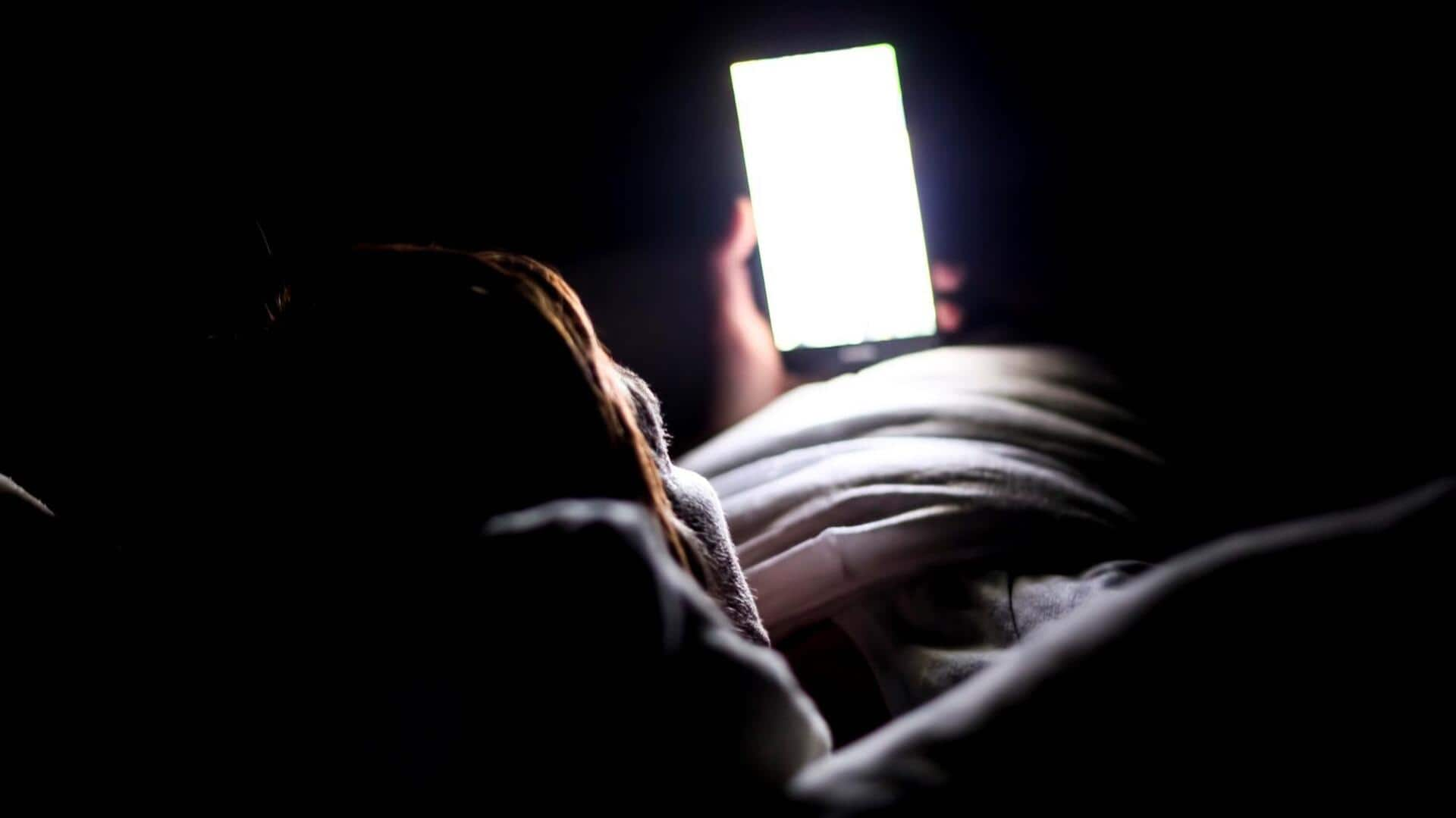
Screen time before bed: Myth v/s facts
What's the story
Most of us believe that using smartphones at night can ruin our eyesight. We all fret over the potential harm of staring at screens before sleeping. But, are these claims really true? Let's take a closer look and find out what science really says about nighttime smartphone use and its impact on our vision. Here are some common myths and insights into how smartphone use might affect your eyes without jumping to conclusions.
Blue light
Blue light concerns
One of the most common myths is that blue light emitted by screens causes severe eye damage. Although blue light exposure can lead to digital eye strain, there's no definitive evidence linking it directly to long-term vision problems. The discomfort caused after prolonged screen time is usually a result of focusing issues rather than blue light itself.
Sleep disruption
Impact on sleep patterns
A common worry is that using smartphones at night may disturb sleep cycles, indirectly affecting eye health. The bright screens of the devices can meddle with the body's melatonin levels, which is critical for sleep. The meddling makes it difficult to fall asleep. However, the degree of this effect can vary greatly from person to person. Notably, while this may impact sleep quality, it doesn't directly cause permanent eye damage.
Eye strain
Eye strain and fatigue
Extended screen time can cause temporary eye strain and fatigue, but not permanent damage. Common symptoms include dry eyes and headaches, usually caused by a reduction in blinking rates when staring at screens for long periods. Taking regular breaks can be an effective way to combat these symptoms. The practice encourages more frequent blinking, which helps moisten the eyes, minimizing discomfort and strain.
Screen time tips
Screen time recommendations
To reduce eye strain while using a smartphone at night, experts recommend following the 20-20-20 rule: after every 20 minutes, look at an object at least 20 feet away for 20 seconds minimum. You can also adjust the screen's brightness and use night mode options to reduce strain. These strategies not just help ease discomfort but also prevent long-term damage to your eyes.